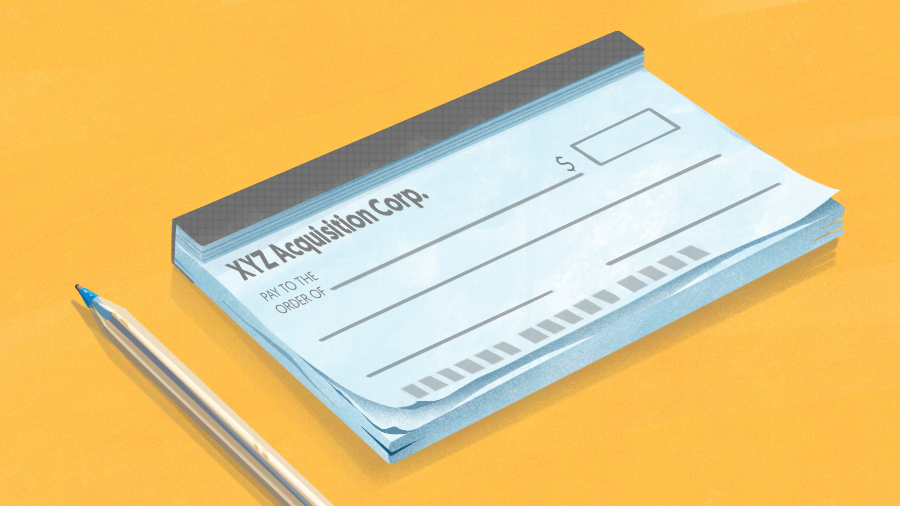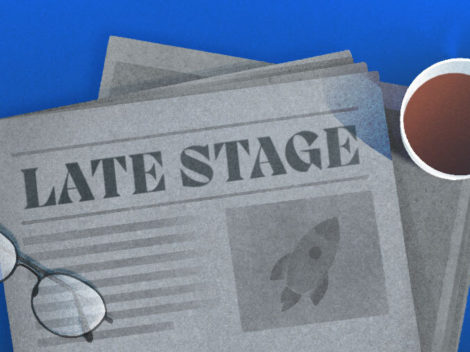While 2020 will be remembered for a lot of things, in the investment world it may be known as the year of the special purpose acquisition company, also known as a SPAC.
Subscribe to the Crunchbase Daily
The market has witnessed in excess of $70 billion in gross proceeds from more than 200 SPACs so far this year, according to SPAC Insider, and investors expect a robust pipeline in 2021.
But what are the pros and cons of looking to these blank-check companies in lieu of a traditional IPO?
The answers vary depending on the company, but timing, market, comparables and quality of investors all can play a role, as well as how easy it can be to understand what a company does, venture capitalists say.
One can look at a SPAC as the reverse of a traditional IPO. A SPAC goes public first—usually with a highly regarded executive team able to raise money from large institutional investors—with the intent to acquire a private company to put in its shell within about 24 months.
“You can think of it like: an IPO is basically a company looking for money, while a SPAC is money looking for a company,” said Don Butler, managing director at Thomvest Ventures. He added that one of Thomvest’s portfolio companies considered going public through a SPAC earlier this year before instead being sold.
A tale of two companies
On the other hand, Yash Patel, general partner at Telstra Ventures, has watched two of his portfolio companies—mobile gaming platform Skillz and e-commerce company BigCommerce—take different roads to the public market.
BigCommerce went public on Aug. 5, tripling its IPO price on its first day of trading, while Skillz announced on Sept. 2 it would merge with Flying Eagle Acquisition Corp., a SPAC headed by the same executives who took DraftKings public through another SPAC earlier this year.
“There are two main reasons,” Patel said of looking at a SPAC.
Speed to market is one, he said. Going public through a SPAC can accelerate a company’s market entry by anywhere between two and four months. Without a company in the actual shell, there are fewer SEC comments and questions to answer given the lack of financial statements and related material, and the auditing process is shortened.
A SPAC also has the added assurance of having a long-term investor base via a private investment in public equity, or PIPE, in place, instead of trying to sell a company to public investors at a roadshow.
“That type of assurance is typically not there in an IPO, unless it’s painfully obvious the company will do well,” he said. “The SPAC allows us to get those assurances from investors early on at an agreed price, not the night before like a normal IPO.”
Flying Eagle Acquisition Corporation attracted the money of several known longer-term investors such as Fidelity, Franklin Templeton and Wellington for the Skillz deal.
Those aspects loom large for a company like Skillz. Gaming companies have at times been hard sells to public investors, usually due to the hit-or-miss nature of creating games.
With no direct public company comparable, a SPAC seemed like the most sensible route, especially when multiple SPACs approached Skillz about going public, Patel said.
BigCommerce was different on nearly every front. The company had already frontloaded much of its work, preparing its S-1 prospectus earlier in the year, Patel said. The considerable work needed to go public had been completed prior to the pricing of its IPO. “It was more like pushing a button,” he said.
BigCommerce’s ecommerce platform also has a comparable in the public markets: Shopify and its $128 billion market cap.
“It’s something investors clearly understand,” Patel said.
Investors’ pedigree
Hany Nada, co-founder and partner at ACME Capital, also is familiar with taking a company public through a SPAC. He was an early investor in DraftKings and sits on its board of directors.
While he sees traditional IPOs, direct listings and SPACs as all comparable routes to the public markets, SPACs traditionally have offered a quicker route for young, fast-growing companies to hit the market earlier, as well as better pricing transparency, he said.
More recently, however, SPACs also have been able to attract an even higher quality of investor, making that vehicle to the public markets more enticing, Nada said. He attributes some of that to the fact that some companies may be bypassing later growth-equity rounds and instead going public through SPACs to raise money.
“I think you are seeing SPACs replace some of the growth-equity investment,” he asid.
That has led to some of those players and other institutional investors being involved in the SPAC market. DraftKings’ SPAC included funds managed by Capital Research and Management Co., Wellington Management Co. and Franklin Templeton.
That same theme is playing out in biotech, which has watched more than a dozen SPACs form this year. Last month, Jiya Acquisition, formed by Samsara BioCapital, filed to raise up to $100 million in an initial public offering.
Jiya CEO Rekha Hemrajani said whereas at one time biotech companies raised a mezzanine round to help bring in large healthcare investors that eventually would help it undertake an IPO, SPACs are able to combine both events with desirable inventors.
“In biotech you are seeing more health care investors, more health care specialists, investing in SPACs,” she said.
Long-term slowdown not expected
While the SPAC market has settled a bit toward the end of the year, investors said they do not expect that to be a long-term trend.
December typically sees a spurt of traditional IPOs—such as those of Airbnb and DoorDash next week—and afterwards investors expect a strong lineup of SPACs early next year.
Former political strategist turned venture investor Bradley Tusk earlier this year formed a SPAC targeting businesses in the leisure, gaming and hospitality industries. The company, IG Acquisition Corp., raised $300 million via an IPO on the Nasdaq in October.
Tusk predicted that while SPACs may see some drop-off in 2021 after this year’s surge, they’ll continue to be popular.
“On the one hand, like any kind of trend one can get so popular there’s a lot of saturation and investors can say, ‘OK, enough SPACs already.’” he said. “The other argument could be: this is a really efficient way to raise capital. Investors like it because it gives them a lot of optionality — they can always choose not to participate and get their money back. And people like me like it because it’s a way to raise a lot of venture money in one shot. … I did three days of meetings and raised $300 million with a SPAC.”
Thomvest has three portfolio companies actively talking to SPACs to go public, according to Butler. Nada said his firm has four active conversations involving ACME portfolio companies possibly going public through SPACs.
Hemrajani said while she sees a lot of benefits in SPACs, both for companies and investors, time will ultimately decide if investors will continue to seek out that method to take a company public.
“It’s early innings right now” for the SPAC market, she said. “We will have to see if this money that is being invested in SPACs right now will later be reinvested the same way.”
— Crunchbase News Managing Editor Marlize van Romburgh contributed to this story.
Illustration: Dom Guzman

Stay up to date with recent funding rounds, acquisitions, and more with the Crunchbase Daily.










![Illustration of stopwatch - AI [Dom Guzman]](https://news.crunchbase.com/wp-content/uploads/Halftime-AI-1-300x168.jpg)
67.1K Followers